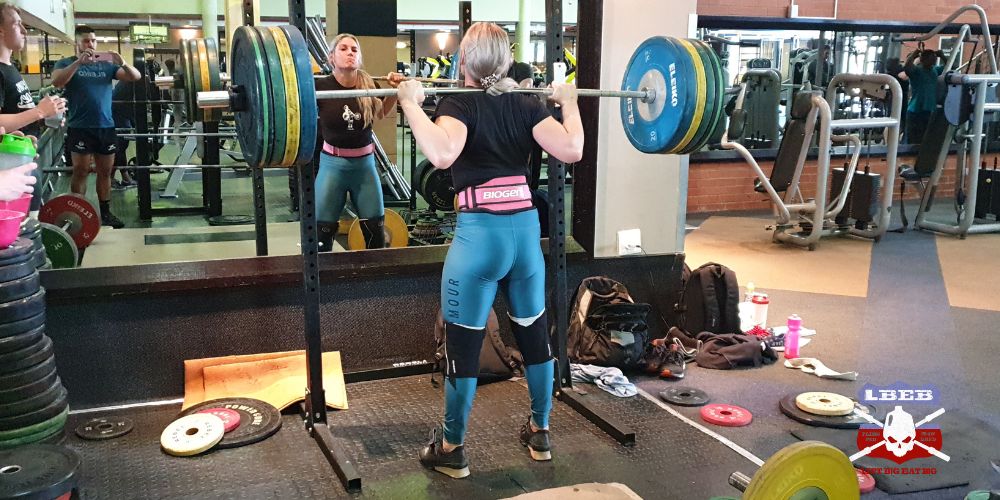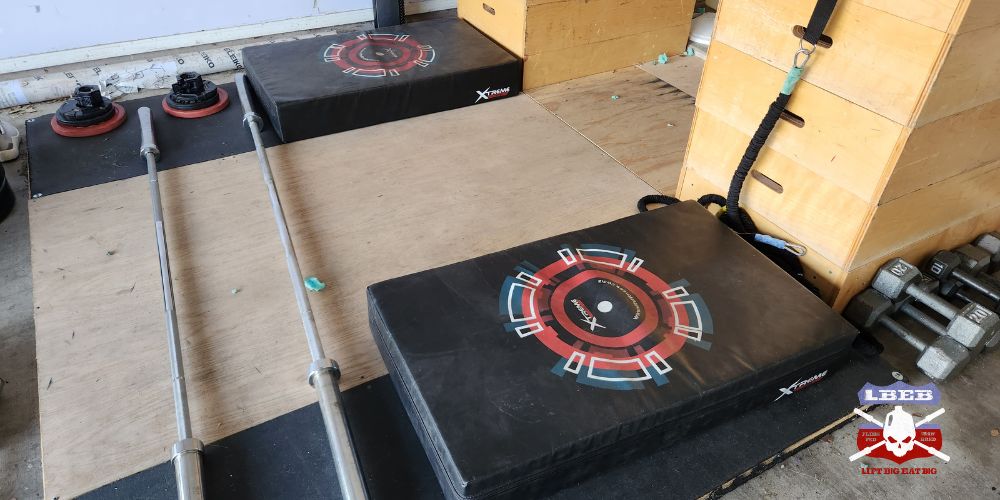Training at home can present problems to work around. Concrete is one of them. And being a Weightlifter or CrossFitter means dropping your bumper plates in your garage, driveway, or back patio. Can you drop bumper plates on concrete, though?
You can drop bumper plates on concrete, but you shouldn’t, as you’ll void your warranty and significantly reduce the life of your equipment. However, using a platform and crash pads will protect your equipment.
It’s not just your bumper plates you need to worry about. Let us explain what else you should consider and how to protect your equipment.
Table of Contents
Why You Shouldn’t Drop Bumper Plates On Concrete
Void Your Warranty
Bumper plates have warranties ranging between 2 to 10 years, depending on the quality of the plates. But that assumes you’re using them as intended and dropping them on a platform.
By dropping bumper plates directly onto concrete, you won’t be able to replace any damages, as your warranty will be voided.
Reduce The Lifespan Of Your Bumper Plates
While bumper plates are designed to be dropped, they should be dropped onto softer surfaces to prolong their life. Dropping them onto concrete doesn’t dissipate force effectively and causes a shockwave through the plates and barbell.
If you have bumper plates with a steel ring as the center hole, you’ll find that is the first thing to come loose.
Your Barbell May Stop Spinning

If you’re dropping plates, you’re likely performing Olympic lifts, and you should use a proper Weightlifting barbell. Weightlifting barbells are designed with bearing sleeves to facilitate easy spinning.
You can break this, causing your sleeve to get stuck, by dropping your barbell onto concrete with bumper plates. Especially if you’re using hard, dense rubber scoring high on the Shore Durometer Rating, meaning it doesn’t bounce.
Your Concrete Will Crack
It may not happen the first time—or the tenth. But if you’re repeatedly dropping bumper plates in a similar spot for months, it will start to crack your concrete. In my first garage gym, we lifted for years on platforms dropping heavy loads during Weightlifting training.
When moving the platforms, we discovered the concrete had cracked and turned to rubble under those areas.
And this was through a platform! So, if you’re dropping directly on concrete, it will turn to rubble much faster.
How To Drop Bumper Plates On Concrete Safely
While I still don’t condone or recommend dropping your bumper plates on concrete, here are some ways to protect your equipment and make it safer.
Use A Platform
Even though I mentioned the concrete under my platforms had cracked, having some form of gym flooring will prolong this from happening. And depending on how heavy you’re lifting or how thick of a platform and rubber you can get, you may avoid it entirely.
You can buy pre-made platforms with very soft rubber that will do a better job than a DIY platform. However, a DIY platform is much cheaper and provides better protection than dropping on bare concrete.
A simple DIY platform uses horse stall rubber mats that cost $50 each and plywood.
Drop Pads Are Your Best Friend

Drop pads, also known as crash pads, are the ultimate solution for dropping on concrete. We use our pair religiously as it also dampens the sound for the neighbors.
They are large foam pads that double as blocks. Treat them as a 2 in 1 investment for dropping weights and lifting from blocks. Crash pads can sit on two ends of the quality spectrum. Typically, the more expensive versions use denser foam so they don’t sink and deform with use.
Cheaper versions use softer foam that deforms with use, so consider this when looking for a pair. We recommend the Rogue Fitness Crash Cushions, which are made with denser foam at a great price.
Use Hi-Temp Bumper Plates
If you’re hell-bent on dropping your weights on concrete, you need a soft, bouncy set of bumper plates. Hi-Temp bumper plates made from recycled crumbed rubber are your answer and are much cheaper than high-quality bumper plates.
It’s why we recommended these as the best bumper plates for concrete. However, the downside to these plates is their thickness, and you’ll only be able to load approximately 160 kg on a men’s barbell.
Summary
Avoid dropping your bumper plates onto concrete unless you have protective equipment like a platform or crash pads. If you have an older barbell you don’t mind thrashing, use Hi-Temp bumper plates for extra protection.
